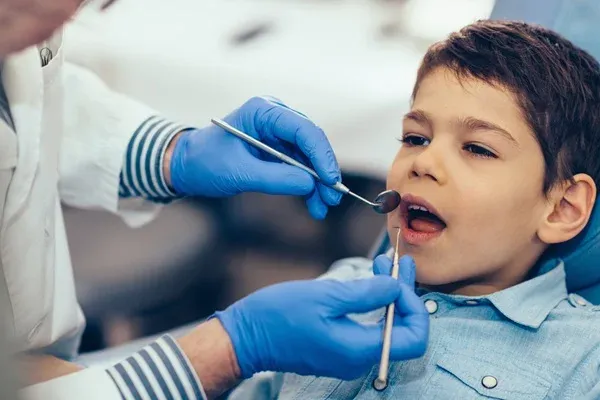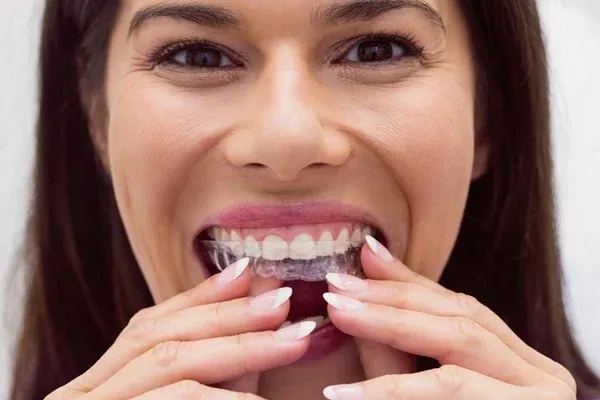Teenagers, Adults, and Orthodontics: Choosing Braces or Invisalign at Any Age
Dr. Hoss Abar
Orthodontic treatment is no longer just for teenagers; it's a growing trend embraced by people of all ages. Whether you're a teen looking to perfect your smile or an adult revisiting the dream of straighter teeth, modern orthodontic options like braces and Invisalign make it easier than ever to achieve your goals. With technological advancements and more discreet solutions, orthodontic care has become popular for anyone seeking improved oral health and confidence in their smile. This blog explores the options and benefits of orthodontics for teenagers and adults, helping you decide between braces and Invisalign at any age.
Why Teenagers Are Opting for Orthodontics
- Prevention of Future Dental Issues: Early orthodontic treatment can correct alignment problems, improve bite function, and prevent more complex issues later in life.
- Boost in Confidence: Many teens choose orthodontics to enhance their smile and feel more self-assured during their formative years.
- Discreet Options Available: Alternatives like Invisalign provide a subtle solution compared to traditional metal braces, making teens less self-conscious.
- Effective During Development: Orthodontic treatments are often more successful in adolescence as the jaw and teeth are still growing and easier to adjust.
- Parental and Professional Support: Parents and orthodontists often encourage early treatment for long-term oral health and appearance benefits.

Braces vs. Invisalign for Teenagers: What's the Best Choice?
Effectiveness:
Braces are highly effective for severe or complex alignment issues.
Invisalign works well for mild to moderate orthodontic problems but may not address more complicated cases.
Aesthetic Appeal:
Braces are visible with metal brackets and wires, which some teenagers may feel self-conscious about.
Invisalign offers nearly invisible aligners, making it a more discreet option.
Comfort:
Braces can irritate due to brackets and wires, especially early in treatment.
Invisalign aligners are smooth and generally more comfortable, with no sharp edges.
Lifestyle and Maintenance:
Braces require careful brushing and flossing around brackets, which can be challenging for teens.
Invisalign aligners are removable, making oral hygiene and eating more convenient, but they must be worn consistently (20–22 hours a day).
Durability:
Braces are fixed and durable, making them ideal for active teens who might misplace removable aligners.
Invisalign aligners can be lost or damaged if not handled carefully.
Compliance:
Braces ensure compliance as they are non-removable.
Invisalign requires discipline; teens must wear aligners consistently and remember to switch to the next set on schedule.
Cost and Insurance:
Braces and Invisalign can vary in cost depending on the complexity of the treatment. Insurance may cover both options, but parents should check specific plans.
Braces vs. Invisalign for Teenagers: What's the Best Choice?
Durability and Effectiveness:
Braces are fixed and effective for complex alignment issues, ensuring consistent progress.
Invisalign offers flexibility but requires discipline to wear aligners for the recommended 22 hours daily.
Aesthetic Considerations:
Traditional metal braces are more noticeable but can be customized with colored bands.
Invisalign is nearly invisible, making it a popular choice for teens concerned about appearance.
Lifestyle Factors:
Braces may restrict certain foods like sticky or hard snacks.
Invisalign allows teens to eat freely but requires proper care to avoid misplacing or damaging aligners.
Cost and Insurance:
Braces are generally more affordable and often covered by insurance.
Invisalign may be pricier, but some parents and teens see it as worth the investment for its discreet nature.
Orthodontics for Adults: It's Never Too Late
- Rising Trends: An increasing number of adults are seeking orthodontic treatment to improve their smiles and oral health.
- Aesthetic Options: Invisalign and ceramic braces cater to adults who prefer less noticeable treatments.
- Health Benefits: Orthodontics can address bite issues, reduce jaw pain, and prevent tooth wear caused by misalignment.
- Convenience and Comfort: Modern treatments are more comfortable and tailored to adult lifestyles, with shorter overall durations in some cases.
- Confidence Boost: Straightening teeth as an adult enhances self-esteem and can significantly impact personal and professional interactions.
- No Age Limit: Orthodontic care is effective at any age as long as teeth and gums are healthy. Adults with untreated alignment issues can still achieve transformative results.

Braces or Invisalign for Adults: Which Is Right for You?
Lifestyle Considerations:
Braces: Fixed and require fewer daily decisions but may be more noticeable in professional settings.
Invisalign: Removable, offering flexibility for meals and events, but requires discipline to wear aligners for the recommended 22 hours daily.
Aesthetic Preferences:
Braces: Options like ceramic braces can be less noticeable but are still visible.
Invisalign: Nearly invisible and ideal for adults who prioritize discretion.
Complexity of Treatment:
Braces: Better suited for complex alignment issues, including severe overcrowding and bite corrections.
Invisalign: Effective for mild to moderate alignment concerns but may not address severe cases.
Comfort and Maintenance:
Braces: Can cause initial discomfort and require adjustments; oral hygiene may be more challenging.
Invisalign: Typically more comfortable, with smooth aligners, but requires diligent cleaning and care.
Time Commitment:
Braces: Fixed duration, typically 18-24 months, depending on the case's complexity.
Invisalign: Treatment length varies but may be shorter for mild corrections; requires regular aligner changes.
Consultation with an Orthodontist:
The best choice depends on individual needs, preferences, and dental health. A professional consultation can help determine the most effective solution for your smile.
Costs and Insurance: What to Expect for Both Teenagers and Adults
Braces Costs:
Traditional metal braces are generally the most affordable option.
Ceramic braces are slightly more expensive due to their discreet appearance.
Lingual braces (placed behind the teeth) are the priciest braces option.
Invisalign Costs:
Invisalign costs more than traditional braces, particularly for severe cases requiring extended treatment.
Costs may vary based on the number of aligners needed and the treatment duration.
Factors Influencing Costs:
The complexity of the case (mild alignment issues vs. major corrections).
Length of treatment and additional appliances required.
Geographic location and orthodontist's expertise.
Insurance Coverage:
Many dental insurance plans cover part of the cost of orthodontic treatments, but the extent varies by provider and policy.
Some plans may only cover treatments for minors, so adults should verify coverage specifics.
Payment Plans and Discounts:
Many orthodontists offer payment plans, allowing families to spread costs over manageable monthly installments.
Discounts may be available for upfront payments or multiple family members undergoing treatment.
Additional Costs to Consider:
Retainers after treatment are used to maintain results (often at an additional cost).
Repairs or replacements for broken braces or lost Invisalign aligners.
Consultation Fees:
Initial consultations are sometimes free or discounted, which helps families and individuals explore their options.
Contact your Pinole dentist, Dr. Hoss Abar, DDS, MSD at Abar Orthodontics, to learn more about teenagers, adults, and Orthodontics.
Resource:
Aesthetic Considerations for Braces vs. Invisalign
*This media/content or any other on this website does not prescribe, recommend, or prevent any treatment or procedure. Therefore, we highly suggest that you get the advice of a qualified dentist or other medical practitioners regarding your specific dental condition.*
More To Explore
About Us
We believe that every patient deserves to feel confident about their smile. Years of experience creating beautiful and flawless smiles.
Opening Hours:
Monday - Thursday: 8:00 AM - 5:00 PM
Friday: 8:00 AM - 12:00 PM
Saturday - Sunday: Closed
Abar Orthodontics, Pinole, CA
1500 Tara Hills Drive., Suite 204
Pinole, CA 94564
Abar Orthodontics, San Leandro, CA
145 East 14th street., #100
San Leandro, CA 94577
© 2025Abar Orthodontics | All rights reserved | Powered by:Vigorant, Inc.
